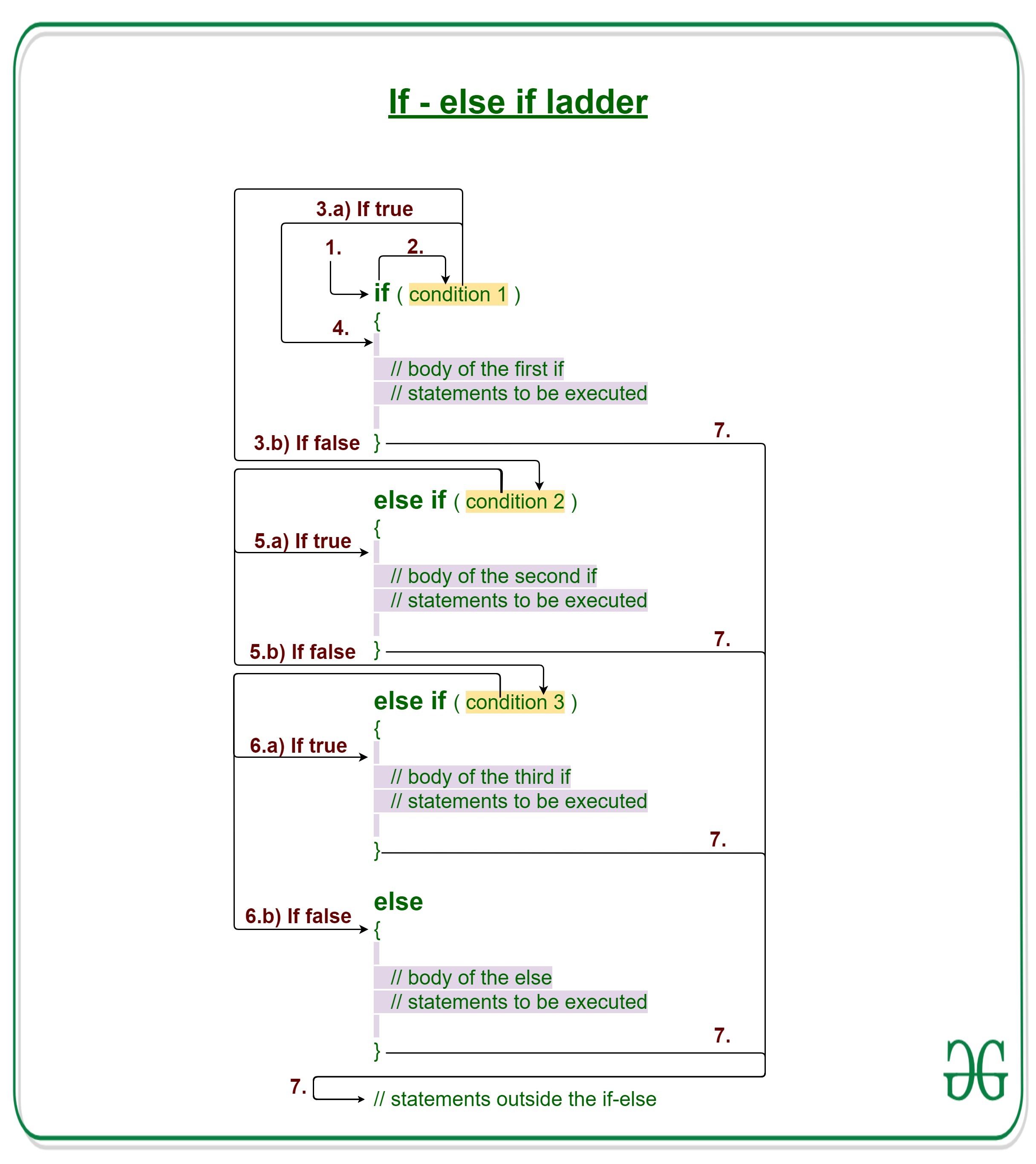Java if-else-if ladder with Examples
Last Updated :
20 Oct, 2022
Decision Making in Java helps to write decision-driven statements and execute a particular set of code based on certain conditions.
Java if-else-if ladder is used to decide among multiple options. The if statements are executed from the top down. As soon as one of the conditions controlling the if is true, the statement associated with that if is executed, and the rest of the ladder is bypassed. If none of the conditions is true, then the final else statement will be executed.

Syntax:
if (condition)
statement 1;
else if (condition)
statement 2;
.
.
else
statement;
Working of the if-else-if ladder:
- Control falls into the if block.
- The flow jumps to Condition 1.
- Condition is tested.
- If Condition yields true, goto Step 4.
- If Condition yields false, goto Step 5.
- The present block is executed. Goto Step 7.
- The flow jumps to Condition 2.
- If Condition yields true, goto step 4.
- If Condition yields false, goto Step 6.
- The flow jumps to Condition 3.
- If Condition yields true, goto step 4.
- If Condition yields false, execute else block.
Goto Step 7.
- Exit the if-else-if ladder.
Flowchart if-else-if ladder:

Example 1:
Java
import java.io.*;
class GFG {
public static void main(String[] args)
{
int i = 20;
if (i == 10)
System.out.println("i is 10\n");
else if (i == 15)
System.out.println("i is 15\n");
else if (i == 20)
System.out.println("i is 20\n");
else
System.out.println("i is not present\n");
System.out.println("Outside if-else-if");
}
}
|
Output:
i is 20
Outside if-else-if
Time Complexity: O(1)
Auxiliary Space: O(1)
Dry running
Example 1:
1. Program starts.
2. i is initialized to 20.
3. condition 1 is checked. 20 == 10, yields false.
4. condition 2 is checked. 20 == 15, yields false.
5. condition 3 is checked. 20 == 20, yields true.
5.a) "i is 20" gets printed.
6. "Outside if-else-if" gets printed.
7. Program ends.
Example 2:
Java
import java.io.*;
class GFG {
public static void main(String[] args)
{
int i = 20;
if (i < 10)
System.out.println("i is less than 10\n");
else if (i < 15)
System.out.println("i is less than 15\n");
else if (i < 20)
System.out.println("i is less than 20\n");
else
System.out.println("i is greater than "
+ "or equal to 20\n");
System.out.println("Outside if-else-if");
}
}
|
Output:
i is greater than or equal to 20
Outside if-else-if
Time Complexity: O(1)
Auxiliary Space: O(1)
Related Articles:
- Decision-Making in Java
- Java if statement with Examples
- Java if-else statement with Examples
- Switch Statement in Java
- Break statement in Java
- return keyword in Java
Share your thoughts in the comments
Please Login to comment...